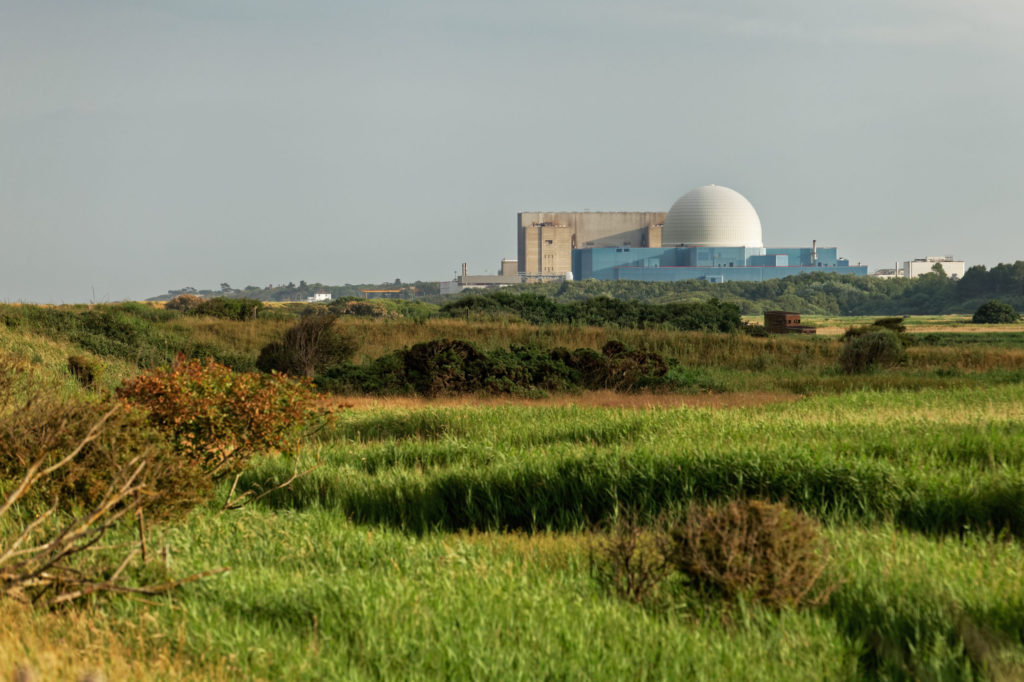by Dr Malte Jansen, Imperial College London
Britain’s nuclear power production fell to what is perhaps its lowest level in 40 years.
The country’s reactor fleet have typically produced 6–8 GW over the past decade, but on August 23rd output fell to just 2.49 GW – less than the combined capacity of the original Magnox fleet built in the 1960s.
The chart below shows the nuclear output during 2020 compared to the range seen over the past decade. The low of 2.49 GW happened on a Sunday afternoon when demand was low, yet nuclear still fell to just 8% of electricity production – it’s lowest since records began.
Over the past decade the country’s last four Magnox reactors (at Oldbury and Wylfa) have shut down. The remaining fleet of 15 reactors is moving towards the end of their working lives, with most aged 30 to 45 years old. There are many reasons why nuclear output would be dwindling: outages for maintenance and repair are a key factor, but system stability and the ongoing coronavirus response also play a part.
Dungeness B has been on a long shutdown since late 2018, and is expected to restart at the end of this year after two years of maintenance. The country’s oldest reactors, Hunterston B and Hinkley Point B, are both on planned outages for inspection, after hundreds of cracks were found in their graphite cores. At the same time, Sizewell B plus one reactor at Hartlepool A, Heysham A and Torness were all offline for various reasons, leaving only one station (Heysham B) operating close to full capacity.
The chart (left) shows the reactor outages seen over 2020. On August 23rd, close to three quarters of our nuclear reactor fleet was out of action. Nuclear power output can are also be determined by grid requirements. National Grid issues instructions to turn generators off or on to maintain system stability. One of their concerns comes when the system becomes low on ‘system inertia’, meaning that the frequency of the electricity supplied can change rapidly if a generator is suddenly lost. This poses a threat to keeping system frequency close to 50 Hz, and force emergency measures such as disconnecting consumers, as happened during the blackout of August 2019.
Sizewell B is Britain’s largest generating unit, and so represents the largest ‘loss of infeed’ risk. If it suddenly disconnected, up to 1320 MW of capacity would be lost.[2] Normally it is perfectly safe for the rest of the system to accommodate this loss, but with COVID restrictions expected to keep electricity demand lower than usual, fewer conventional power stations (coal, gas or biomass) would be available to counter such a failure. National Grid sought the permission to turn Sizewell B down to half its normal output, meaning the largest potential loss was instead the French interconnector at 1000 MW. Sizewell lowered its output between May and September, and was paid £73 million by National Grid in compensation. This in turn wrought havoc with wholesale electricity prices, as by the time we got to the end of August, lockdowns had eased around the country and demand was back to within 1% of historical levels. On 15 September, National Grid ESO had to issue a capacity market notice because not enough generation was expected to be available to meet demand, even though Sizewell B was still being paid to remain offline.The current COVID situation provides a petri-dish for looking at the future of our energy system, and it shows that having more flexible and price-responsive units will be essential to balancing out the increasing volatility of both electricity supply and demand.
[1] Data from Elexon’s REMIT platform. Operators give their planned maintenance schedule in advance, so the chart is able to show the whole of 2020.
[2] Once Hinkley Point C opens, it will become the largest generator in the country, raising the loss of infeed risk to 1630 MW, making the job of balancing the power system more challenging.
